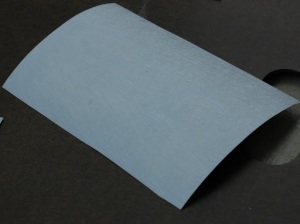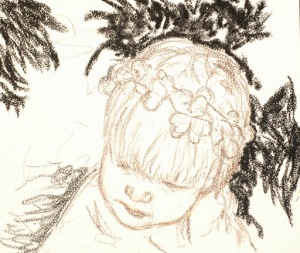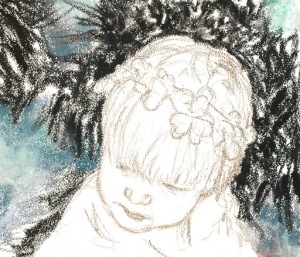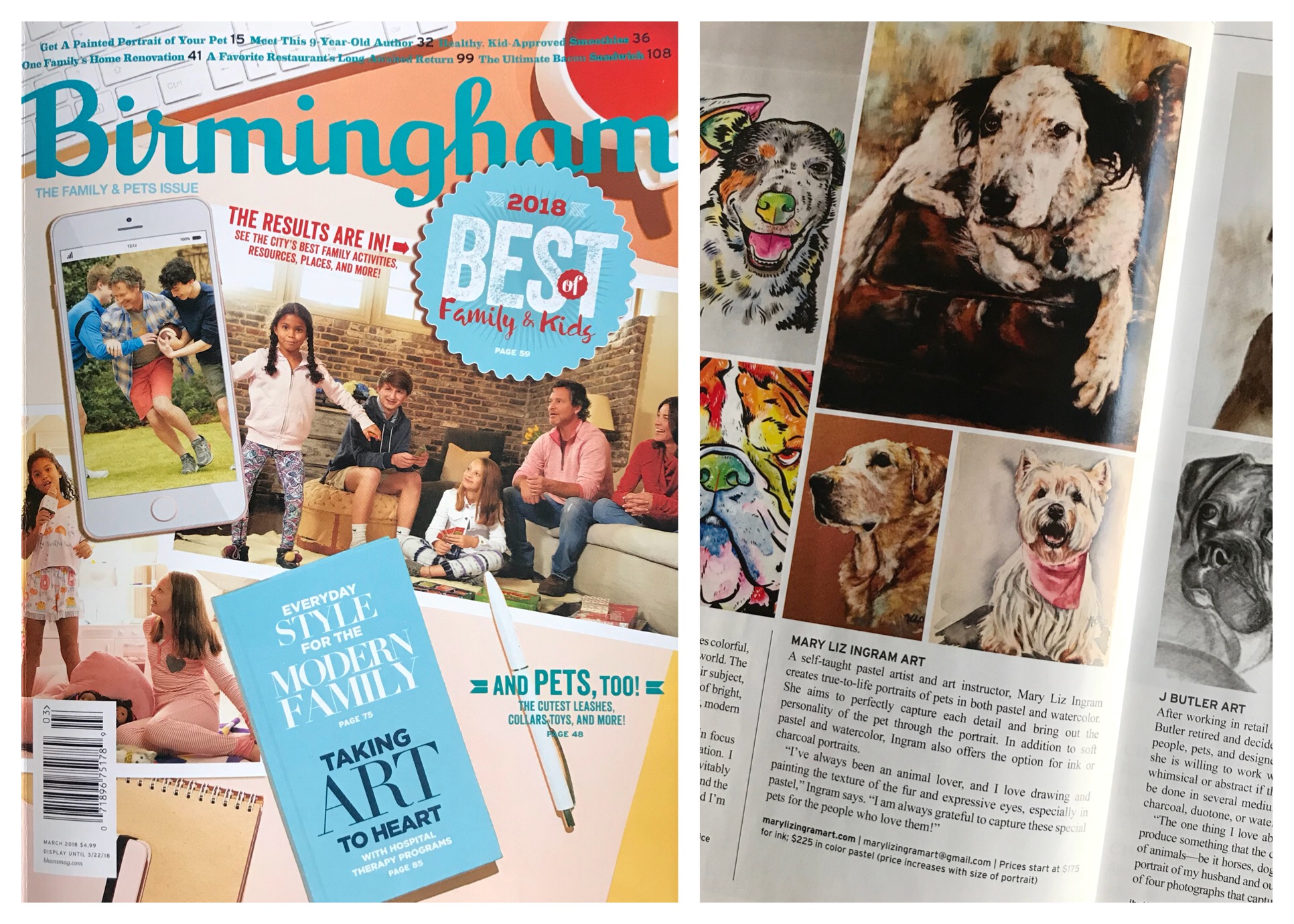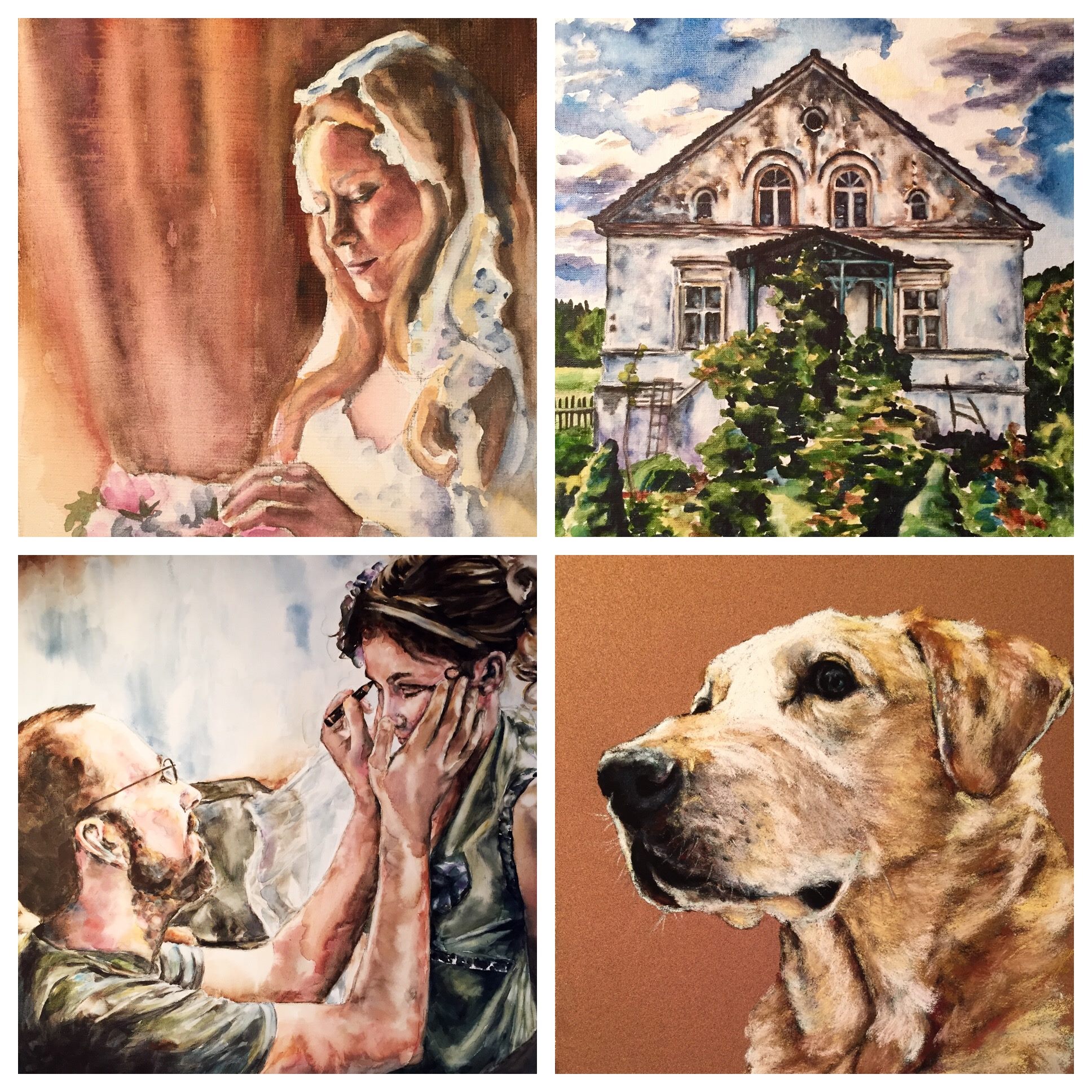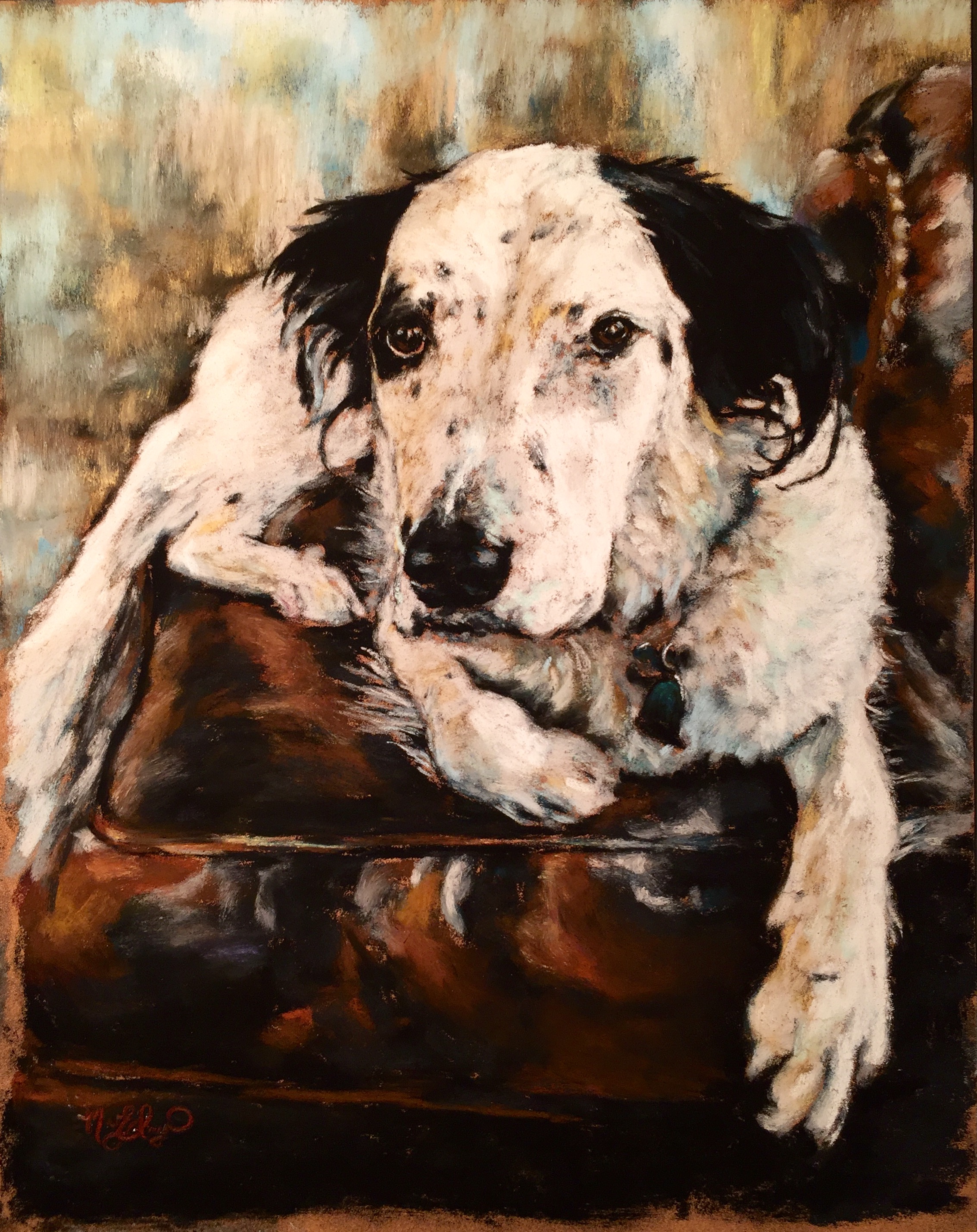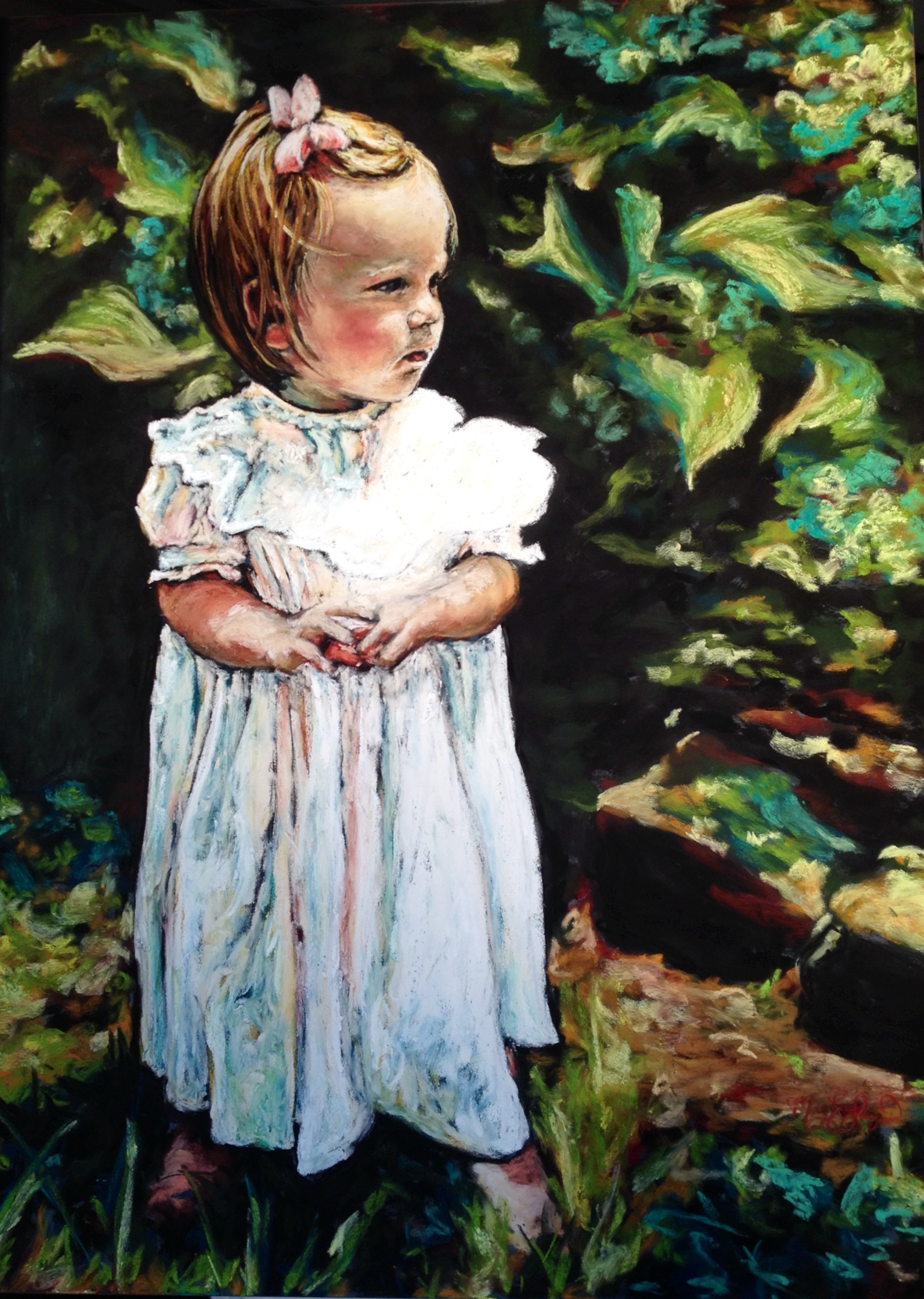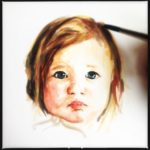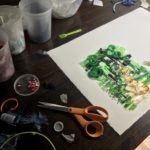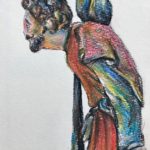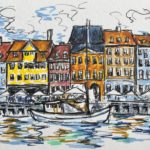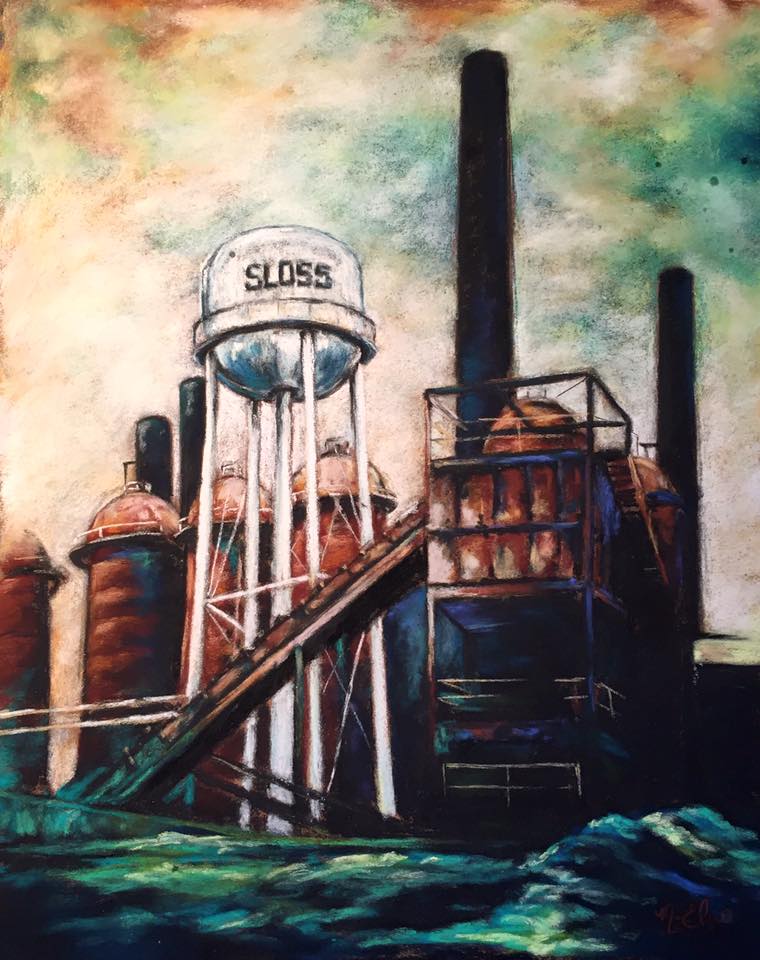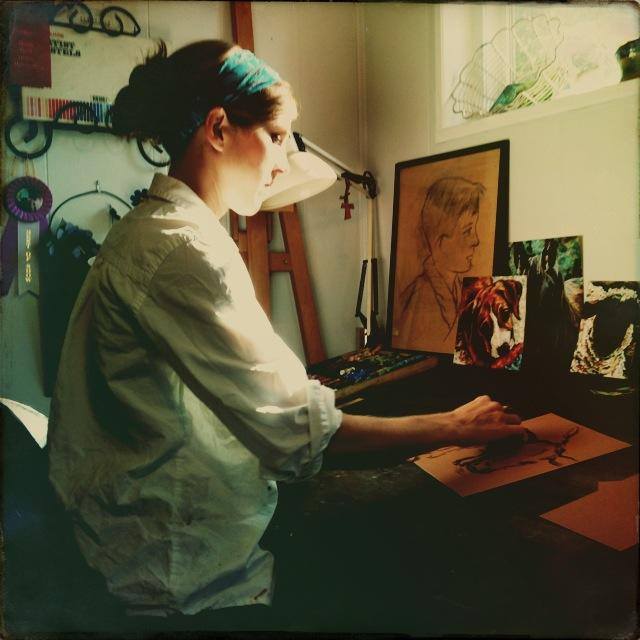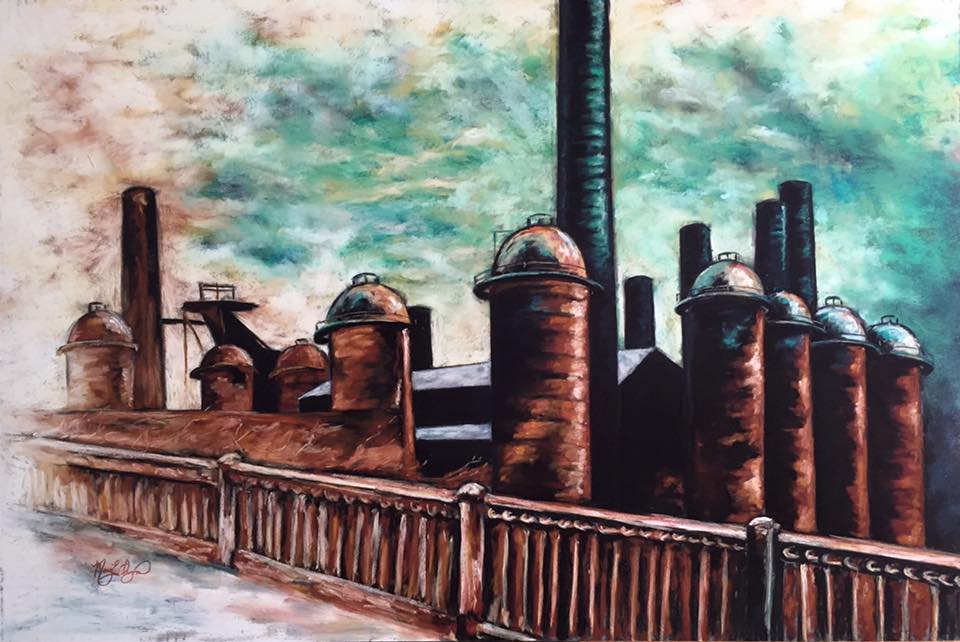At an art show last spring I met a fellow pastel artist and, after some discussions about techniques, we did a paper swap. I gave him a piece of Sennelier La Carte pastel card, and he generously gave me a large sample of a pastel cloth. I like to call this one “paper from the past,” because a) he bought it a very long time ago and can’t remember the brand, b) after research, it is very hard to find information about pastel cloth, and c) it doesn’t seem to be made much anymore, if at all.
I discovered two possible sources for pastel cloth, which comes in a roll and is a synthetic, unwoven fabric, with a coating similar to sanded papers, that will hold layers of pastel. NY Central Art Supply and Sennelier both make/have made a pastel cloth.
The cloth can be cut to the desired size, but needs to be mounted or secured in some way to keep it from curling. It can also be stretched like a canvas. Since I was experimenting, I just taped all four sides down with masking tape.
I cut several pieces and taped them down to a board and decided to try a few things. First I layered some pastels, browns, oranges and ochres, and painted with a brush and water. Then I added details of a lily in my yard. The result pleased me well enough: the paper held the layers well, the water did not affect the paper adversely, all brands of pastels that I tried worked fine (Sennelier, Rembrandt, Gallery, Derwent pastel pencils).
5×7 Soft Pastel on Pastel Cloth
For the second “test” I tried a simple picture with my usual techniques. Again, the results were satisfactory, but I felt that the texture wasn’t as deep as I usually get by layering on Ampersand Pastelbord or Sennelier La Carte pastel card; the colors blended just a bit more.
While I enjoyed trying and learning about a different surface, the benefits of pastel cloth, mainly the texture, are overshadowed, in my opinion, by the downside of it being a cloth. My “verdict” is biased because of my preference for a hard board or card on which to work, and it seems like an unnecessary step to mount the pastel cloth on a hard surface when I could just buy another surface with a similar texture that is already sturdy.
With pastel cloth being hard to find, and made somewhat irrelevant by the numerous types of sanded papers that can also be used with wet or dry mediums (such as Wallis Paper), it may be more convenient and less frustrating to try another surface.
But to those who already have pastel cloth, or like the ability to stretch or mount it onto the size and surface you want, you can create some beautiful pieces of art!
Check out the art by my friend Daniel Curry, who has done several pieces on pastel cloth and so kindly shared some with me!
View his work at www.dcurrycreations.com





